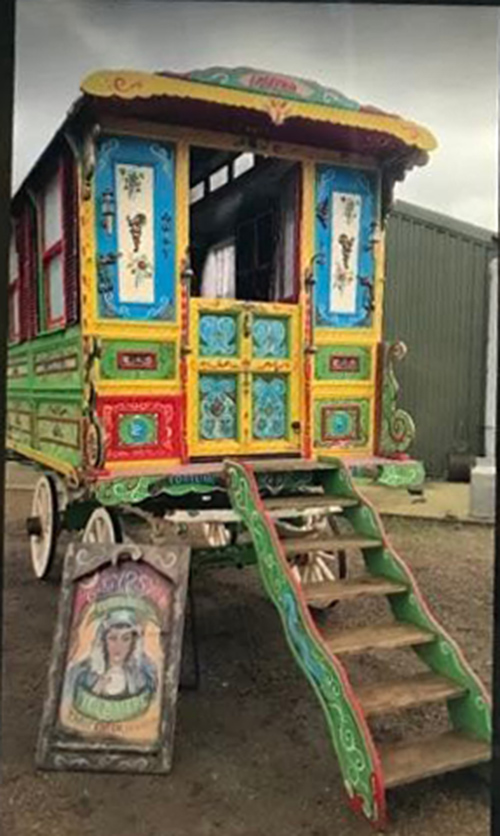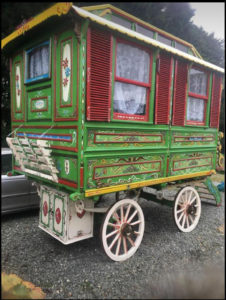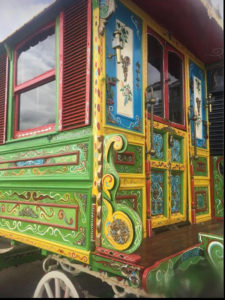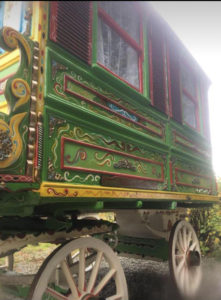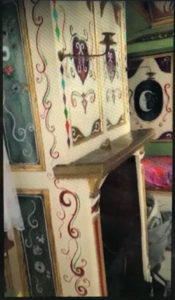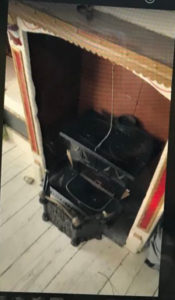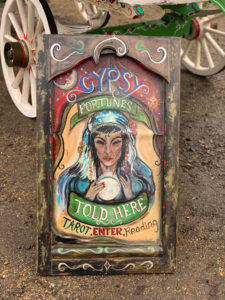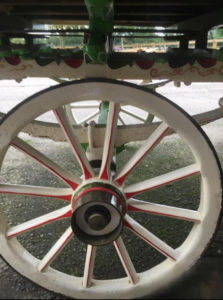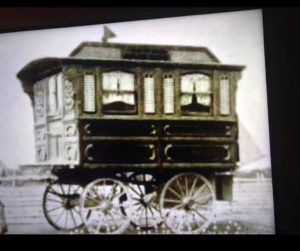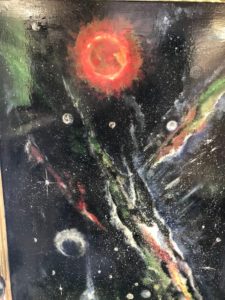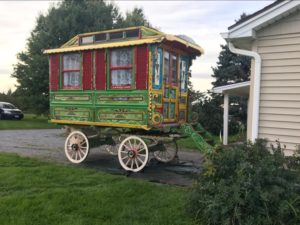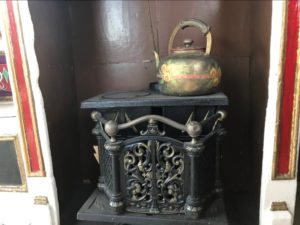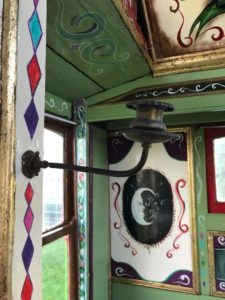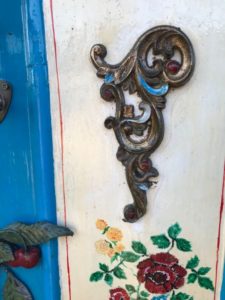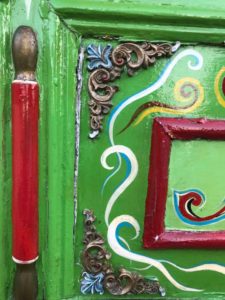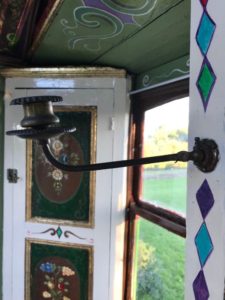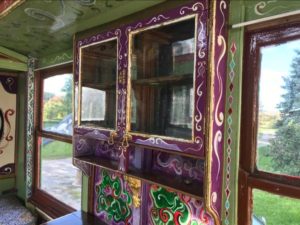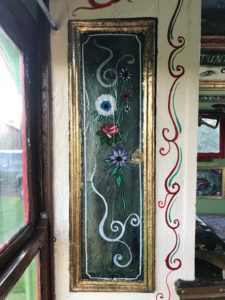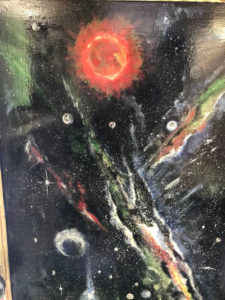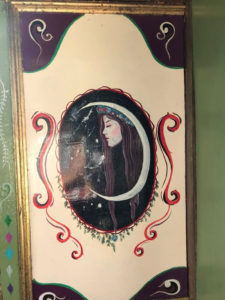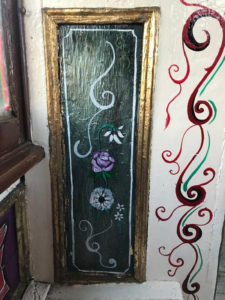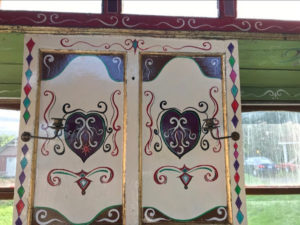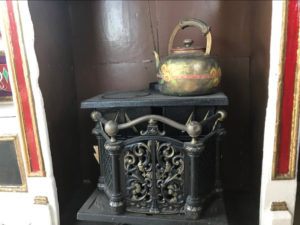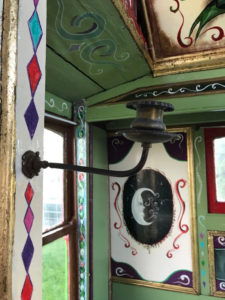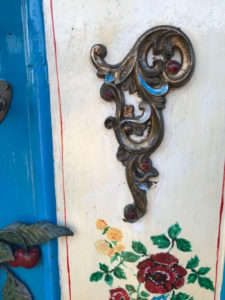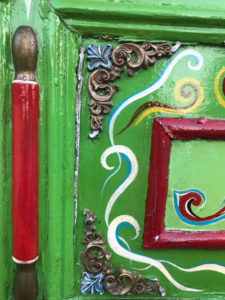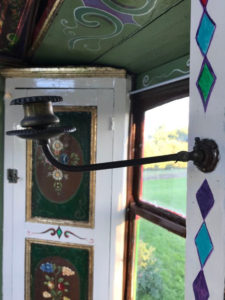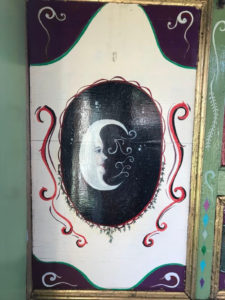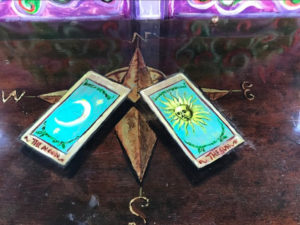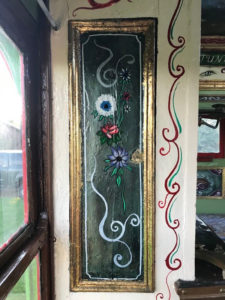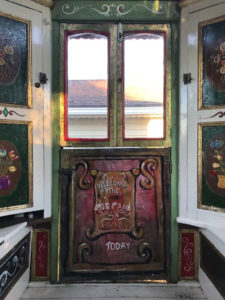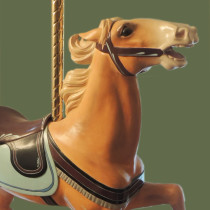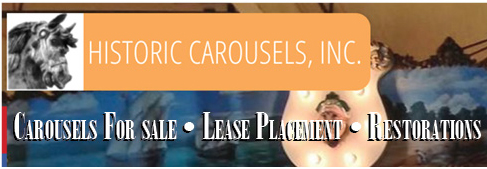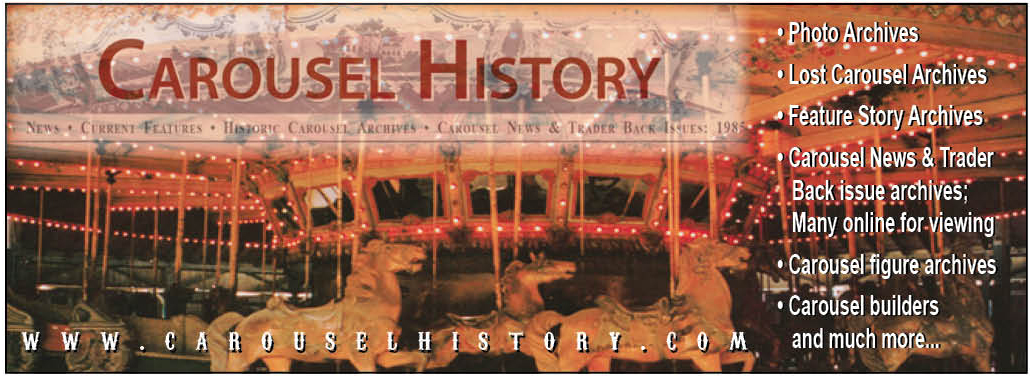Description
Reading wagon
The Reading or kite wagon is so named due to its straight sides that slope outwards towards the eaves, high arched wheels, and relative light weight; there is no other vardo that epitomizes the golden age of Romani horse travel. It dates from 1870 and is synonymous with the original builder Dunton and Sons of Reading from where the vardo takes its name. The wagon was highly prized by the Romanies for its aesthetic design, beauty and practicality to cross fords, pull off-road and over rough ground, something smaller-wheeled wagons like the Burton were unable to do. The Reading wagon is 10 feet long, with a porch on the front and back. The rear wheels were 18 inches larger than the ones on the front. At the start of the 20th century the design incorporated raised skylights.
On either side of the bed space, quarter-inch thick bevelled mirrors were common, and were lavishly decorated. Cupboards and locker seats were built in to prevent movement whilst travelling. Side and back windows were decorated and shuttered, and the body of the vardo itself would have originally been made from beaded tongue-and-groove matchboard, painted red picked out in yellow and green. As with other vardo, the extent of the elaborate decoration reflected the wealth of the family, boasting carved lion heads and gargoyles; these would have been painted gold or extensively decorated with gold leaf.[14] Today, surviving Reading wagons are prized exhibits in museums or private collections. A fine one is in the University of Reading‘s Museum of English Rural Life.[17]
READ MORE: https://en.wikipedia.org/wiki/Vardo_(Romani_wagon)

